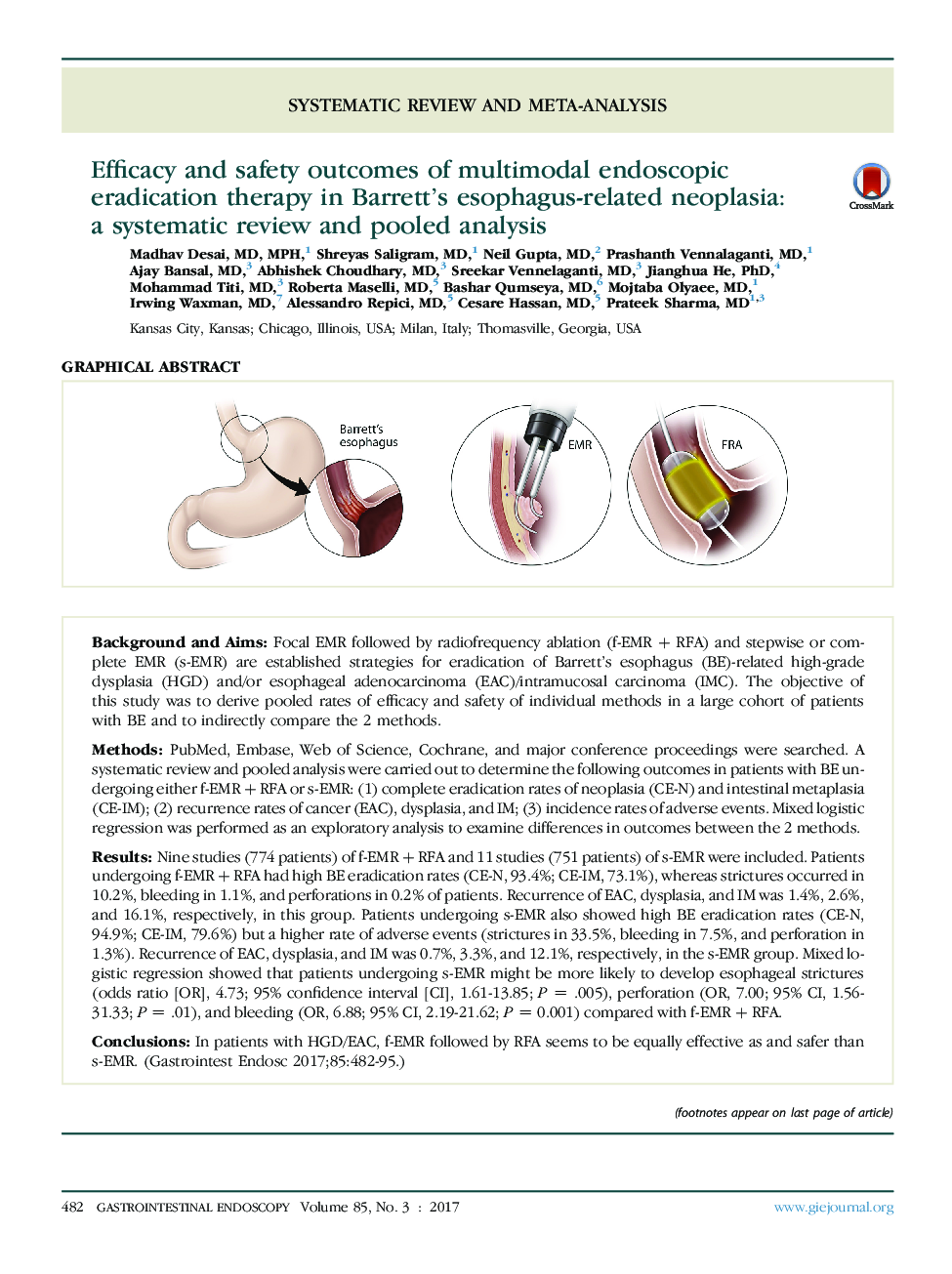| کد مقاله | کد نشریه | سال انتشار | مقاله انگلیسی | نسخه تمام متن |
|---|---|---|---|---|
| 5659456 | 1407464 | 2017 | 18 صفحه PDF | دانلود رایگان |

Background and AimsFocal EMR followed by radiofrequency ablation (f-EMR + RFA) and stepwise or complete EMR (s-EMR) are established strategies for eradication of Barrett's esophagus (BE)-related high-grade dysplasia (HGD) and/or esophageal adenocarcinoma (EAC)/intramucosal carcinoma (IMC). The objective of this study was to derive pooled rates of efficacy and safety of individual methods in a large cohort of patients with BE and to indirectly compare the 2 methods.MethodsPubMed, Embase, Web of Science, Cochrane, and major conference proceedings were searched. A systematic review and pooled analysis were carried out to determine the following outcomes in patients with BE undergoing either f-EMR + RFA or s-EMR: (1) complete eradication rates of neoplasia (CE-N) and intestinal metaplasia (CE-IM); (2) recurrence rates of cancer (EAC), dysplasia, and IM; (3) incidence rates of adverse events. Mixed logistic regression was performed as an exploratory analysis to examine differences in outcomes between the 2 methods.ResultsNine studies (774 patients) of f-EMR + RFA and 11 studies (751 patients) of s-EMR were included. Patients undergoing f-EMR + RFA had high BE eradication rates (CE-N, 93.4%; CE-IM, 73.1%), whereas strictures occurred in 10.2%, bleeding in 1.1%, and perforations in 0.2% of patients. Recurrence of EAC, dysplasia, and IM was 1.4%, 2.6%, and 16.1%, respectively, in this group. Patients undergoing s-EMR also showed high BE eradication rates (CE-N, 94.9%; CE-IM, 79.6%) but a higher rate of adverse events (strictures in 33.5%, bleeding in 7.5%, and perforation in 1.3%). Recurrence of EAC, dysplasia, and IM was 0.7%, 3.3%, and 12.1%, respectively, in the s-EMR group. Mixed logistic regression showed that patients undergoing s-EMR might be more likely to develop esophageal strictures (odds ratio [OR], 4.73; 95% confidence interval [CI], 1.61-13.85; P = .005), perforation (OR, 7.00; 95% CI, 1.56-31.33; P = .01), and bleeding (OR, 6.88; 95% CI, 2.19-21.62; P = 0.001) compared with f-EMR + RFA.ConclusionsIn patients with HGD/EAC, f-EMR followed by RFA seems to be equally effective as and safer than s-EMR.
Graphical Abstract214
Journal: Gastrointestinal Endoscopy - Volume 85, Issue 3, March 2017, Pages 482-495.e4